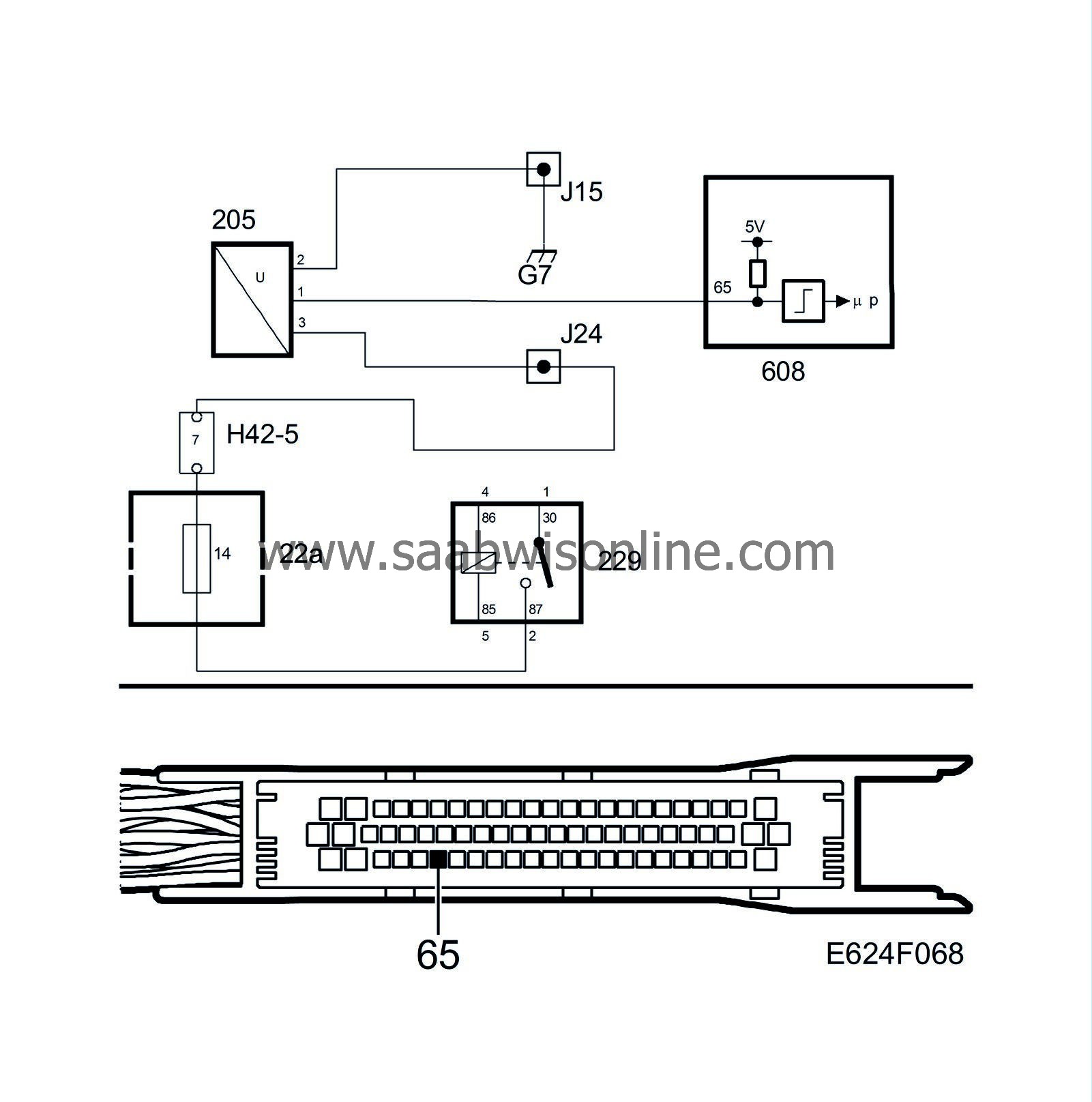P0102
Read the instructions below then
start the fault diagnostic procedure.
Symptom: CHECK ENGINE comes on after two driving cycles.
Engine speed drops slower than normal when the accelerator is released.
Possible misfiring before DTC is generated.
Mass Air Flow Circuit. Low Input.

Fault symptoms
|
•
|
CHECK ENGINE comes on after two driving cycles.
|
|
•
|
Engine speed drops slower than normal when the accelerator is released.
|
|
•
|
Possible misfiring before DTC is generated.
|
On-Board Diagnostics
Type of diagnosis:
|
-
|
Continuous. But interrupted when fault criteria fulfilled and will not restart until next driving cycle.
|
Enable criteria:
|
-
|
Crankshaft rotating. Main relay voltage above 10V.
|
Fault criteria:
|
-
|
Frequency lower than 500 Hz for more than 0.5 s.
|
Dependents:
System reaction to a fault:
|
-
|
Fuel adaptation reset. Intake pressure and intake air temperature used as substitute values.
|
OK report:
|
-
|
60 s has past since start. Fault criteria for P0100, P0102 or P0103 not fulfilled.
|
|
-
|
Conditions for multiplicative fuel adaptation fulfilled. Mass air flow sensor value corresponds with both the air mass flow calculated from intake manifold pressure and the air mass flow calculated from throttle position.
|
Fault handling:
(See section
Fault handling III, other emission-related components and functions
for more information.)
Diagnostic help
The mass air flow sensor sends pulses to the control module but the frequency is too low. The sensor is supplied with current and connected to the control module input.
In most cases, this diagnostic trouble code indicates an internal fault in the sensor, but can also be caused by a large leak between the sensor and the throttle. For example, the diagnostic trouble code could be set if the sensor is removed.
Diagnostic tool functions related to this fault are:
|
•
|
Diagnostic status for the diagnosis.
|
|
•
|
Mass air flow sensor reading, in g/s.
|
|
•
|
Airmass deviation from calculated, in %.
|
See also description of read values in
Menu "Read Values"
for more information.
Check the wiring
Jiggle the leads and in-line connectors at various points and in different directions to detect any intermittent breaks or short circuits in the wiring. Observe the multimeter, test lamp or diagnostic tool while doing this.



